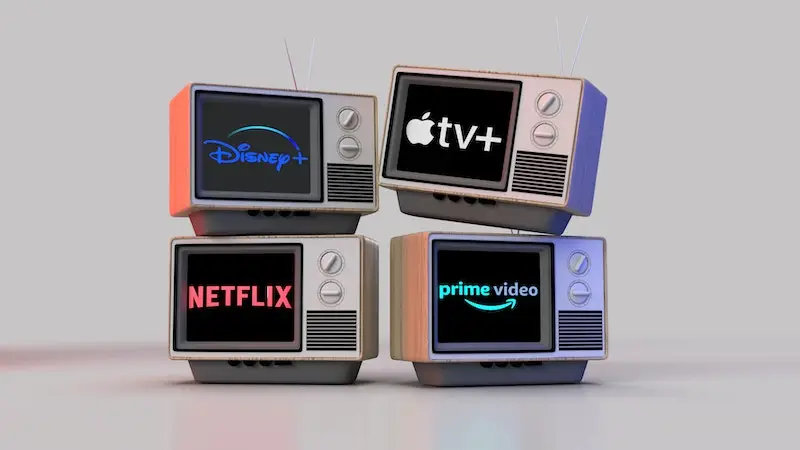Have you at any point been disappointed while attempting to watch a film or Network program, just to be met with the message “Video isn’t available due to licensing restrictions”?
With streaming platforms becoming increasingly popular and access to content more widespread than ever before, this can be a huge disappointment.
In this article, we’ll investigate why video permitting limitations exist, what they mean for real time features, and what should be possible about them.

Overview of Licensing Restrictions on Netflix, Prime Video, YouTube, Paramount Plus, Hulu etc.
Licensing restrictions are an important part of the digital media landscape. They can prevent people from accessing certain movie, TV shows or other video content, as is the case with streaming platforms such as YouTube, Netflix, Amazon Prime Video, Hulu, Paramount Plus (CBS All Access), HBO Max or Crunchyroll not being able to provide access to a video due to licensing issues.
The error message users encounter when dealing with licensing restrictions problem might include:

- “Service Area Restriction – This video isn’t available due to geographical licensing restrictions. Error code 4601”
- “Location Restricton (1005) – This video isn’t available due to geographical licensing restrictions.”
- “This video is not available in your location”
- “This video is unavailable.”
- “Sorry, but due to licensing restrictions, this video isn’t available in your location. (5408)”
It’s important for those using and creating digital media products to understand how these restrictions work in order to be aware of any limitations they may face when trying to access or distribute their own material.
Essentially, licensing regulations dictate who has legal permission to use copyrighted works such as videos, music, software, books and images.
Depending on the type of permit granted by the copyright holder, some clients will have more significant freedoms than others in conveying that substance.
For example, if a company owns a piece of recorded music then they may choose only allow for its broadcast within one country or region at a time. This means that other countries or regions won’t be able to view this same video even if they wanted too until such time as the license agreement changes or expires.
Reasons For Video Licensing Restrictions on Streaming Services

The first reason could be legal requirements. Many countries require that all video-sharing sites obtain permission from copyright holders before using their materials. This ensures that any material used on these video streaming platforms has been legally acquired and will remain protected under copyright law.
Also, a few nations force extra guidelines or limitations on what kind of satisfied can be shown on the web. For example, some countries limit the kinds of videos that can be shared and/or prohibit certain topics from being discussed on specific websites.
Another common reason for placing licensing restrictions on videos is financial rights management. All copyrighted works must receive royalties when they’re distributed digitally or broadcasted over television networks.
To ensure that artists and other creatives get paid properly for their work, companies often restrict access to certain videos until appropriate fees are paid by the user or platform hosting it. Without such precautions in place, there would be no incentive for people to create new content because it would not generate any income at all if widely available without payment or proper compensation structures set up beforehand.
It is also possible that a third party has restricted freedoms to circulate a specific piece of media and does not permit anyone else to do so without their express consent first. Such agreements are typically made between production studios and distributors who acquire the right to stream movies or TV shows exclusively through one outlet only (e.g., Netflix).
This type of restriction prevents others from gaining unauthorized access to the same material while still allowing those with official licenses access as needed – thus protecting both sides’ interests fairly well overall!
Strategies For Navigating Licensing Restrictions & Fixing the Issue on your Device
The first step is to research the streaming platform’s available licenses and determine which type of license best suits your needs.
For instance, assuming you really want admittance to explicit recordings or shows that may not be openly accessible because of copyright issues, then, at that point, you will need to acquire a restrictive permit from the web-based feature supplier.
Another option is to look into alternate sources such as public domain materials or Creative Commons-licensed works. While these options may have some limitations in terms of quality and availability, they could provide a viable solution when traditional methods fail.
Additionally, there are services out there that specialize in helping content creators find suitable licensing agreements with streaming platforms. These services often offer advice on how best to proceed based on the budget and goals of each project.
It’s also possible to buy individual rights or use existing library music instead of obtaining a full license agreement from the provider.
This strategy can often save time and money while still allowing access to desired material without infringing upon any copyrights or other legal restrictions. Here are three key points to remember when navigating licensing restrictions:
- Understand what type of license would work best for you before committing any funds
- Research alternative sources for video/music materials
- Consider buying individual rights or using existing library music
The above strategies should help ensure successful navigation around potentially complex licensing requirements – ultimately leading to more efficient and cost-effective projects that don’t compromise on quality.


